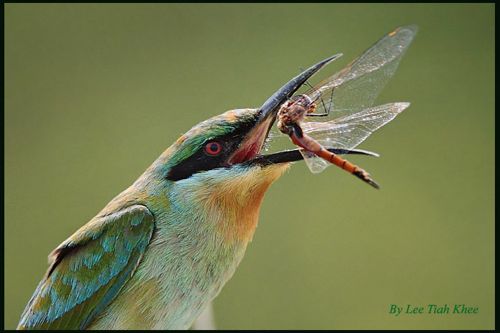Lee Tiah Khee photographed a Blue-tailed Bee-eater (Merops philippinus) in the act of swallowing a dragonfly earlier this year. “It took less than two seconds to swallow it.”
According to our bird specialist R Subaraj, who is also into dragonflies: “Based on the colouration, the shape of the abdomen, the reddish tinge in the wing and the brown patch at the base of the hindwing, I would lean toward the dragonfly being a male Tramea transmarina.
“In Singapore, this is a fairly common dragonfly of open country areas, including grasslands.”
Bee-eaters have been documented catching and eating dragonflies. This is probably one of its favourite food. Photographers love to document the bee-eater handling dragonflies as these insects are large, colourful and make excellent subjects.
This post is a cooperative effort between NaturePixels.org and BESG to bring the study of bird behaviour through photography to a wider audience










7 Responses
Beautiful image of bird behavior!
Capture right on the moment when a bird take action 🙂